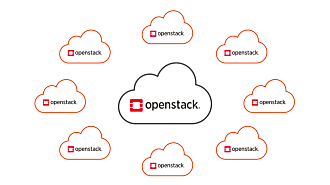Guest
on 21 October 2020
OpenStack at 10 – from peak to plateau of productivity

This week is the latest Open Infrastructure Summit, in a week where the OpenStack Foundation became the Open Infrastructure Foundation to reflect the expansion of the organisation’s mission, scope and community to advance open source over the next decade to support open infrastructure. It is also ten years since OpenStack launched and a lot has changed during that time.
We asked freelance journalist, Sean Michael Kerner, to share his views on the last ten years. Sean is a freelance journalist writing on myriad IT topics for publications around the world. He has spoken at more OpenStack events than he cares to remember. English is his second language (Klingon his first). Follow him on Twitter @TechJournalist.
10 years ago in July 2010, I got an unusual pitch from a PR person. It was the beginning of a long and winding road that defines my experience and viewpoint on OpenStack.
Unlike the usual spate of product and open source pitches from vendors that I got at the time (and still get), the pitch I got on the sunny July afternoon was an offer to speak with the CTO of IT at NASA. It was an offer I couldn’t refuse – and I suspect it’s also the reason why OpenStack got so much attention early on – it was literally ‘rocket science’. In a 2012 video interview I did with Chris Kemp after he left the role of CTO at NASA to start his own OpenStack startup, he told me that in his view OpenStack could well become one of NASA’s great contributions to society.
That was the early hype cycle, and it was amazing to watch. From the early days of just two vendors in 2010, to the heady days of 2012 and the San Diego summit where analysts (and yours truly) were in awe of the rapid embrace of OpenStack by large IT vendors. A year later in 2013 at the Portland summit, I remember clearly being approached by a venture capitalist after an analyst panel. The VC wanted to know who I thought they should invest in. There was a board of sponsors and vendors mounted against the wall and I told him without hesitation – in five years half the vendors would be gone – I wasn’t wrong.
Technology
While I’ve written more than my fair share about the ‘hype’, my interest in OpenStack has been about the technology, the processes that make the project work and the people that bring it all together.
Much like the early explosion of vendors, OpenStack had a rapid acceleration of projects in the early days. It started with just Nova for compute and Swift for storage. Then with each successive release, more projects came in, Keystone for identity, Glance for images, Quantum/Neutron for networking and so on. The OpenStack Foundation struggled in those early days to define what OpenStack actually was all about – there were efforts like Refstack which was an attempt to define a reference implementation and other efforts. There was also the ‘Big Tent’ – an idea where lots of different ideas and projects could all cohabitate under the OpenStack umbrella.
At one point, I could name every project in the OpenStack family – then one day I couldn’t. Did OpenStack bite off more than it could chew? Take on more projects than anyone could use? Aim to be all things to all people when not all people needed all things? … Maybe.
In 2019, at the OpenStack Summit in Denver, which was the first branded as the Open Infrastructure Summit, the halls were quiet and it was the first where I remember there being fewer people than any prior event. The hype was gone, but the core technology remained.
It Was Never Really OpenStack vs AWS
In the early days of OpenStack there was an idea and perhaps an expectation from some that most enterprises wanted or needed to build their own private clouds. There was also a hope that service providers would embrace OpenStack to build public cloud offerings that would effectively challenge or perhaps even surpass AWS.
That’s not what OpenStack is today – or where it ever really was – even if that’s what Rackspace wanted it to be. OpenStack is about open infrastructure and it’s fitting that now that’s also the rebranded name of the OpenStack Foundation.
10 years after first engaging with OpenStack, I have every expectation that it will still be around 10 years from now. OpenStack, though it has gone through the ‘trough of disillusionment’ is now firmly headed toward the ‘plateau of productivity’ at the end of the Gartner hype cycle.
We’re still talking about OpenStack 10 years later because it’s still useful. We’re still talking about OpenStack because it hasn’t stood still, it has continued to evolve and it’s a technology that still matters. In the final analysis, technology survives if it can adapt to the actual needs of the market and that’s something that vendors like Canonical have long recognised. Among the many interviews I’ve had the privilege of doing with Mark Shuttleworth at OpenStack events over the years was the Barcelona Summit in 2016.
“There is no shortage of truly terrible ideas in OpenStack; it’s a truly open forum, with very little leadership and a lot of governance,” Shuttleworth said at the time. “OpenStack needs to focus on stuff that matters.”
And so it has.



